Story by Jeffrey A. Rendall, Photos by David Vier
LA JOLLA, CA – 28-year-old Scott Stallings’ clutch play during Sunday’s final round earned him a victory at the 2014 Farmers Insurance Open, sharing headlines with Tiger Woods’ shocking third round 79 (which led to missing his first career secondary cut) and Phil Mickelson’s withdrawal after the second round due to a back injury.
But even with those notable occurrences, one of the biggest stories of the week was the announcement from several golf luminaries of a new initiative (called Hackgolf) designed to solicit ideas on how to make golf more fun – and henceforth, encourage more people to play.
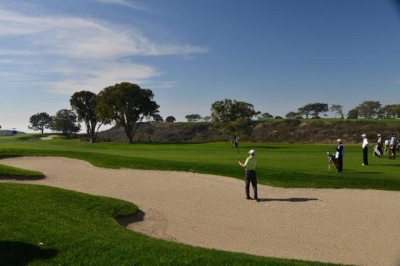 |
| Torrey Pines is open to the public and is very reasonably priced for San Diego residents. |
Golf’s worst-kept secret is that people aren’t playing it like they used to – not the pros, of course, they’re teeing it up every week at numerous locations all over the world. But yearly statistics say that more “average” Americans are giving up golf than coming into the game, which is somewhat strange for a sport where proponents brag you can play it for a lifetime.
Perhaps most striking from the stats is the lack of enthusiasm for golf in the all-important 18-34 age bracket, where the next generation of players should logically be found. Apparently, “young” folks just aren’t interested in golf, despite projects such as the First Tee and a host of youth-oriented programs that can be found at nearly every public golf club or driving range.
Standard justifications for golf’s decline are three-fold: it’s too hard, it takes too long and it’s too expensive. But why?
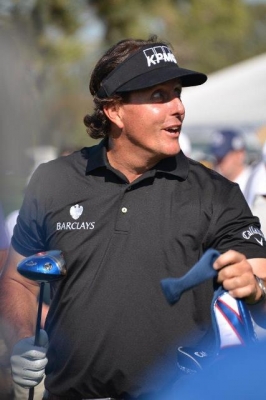 |
| Phil Mickelson made the best of his two rounds before withdrawing with a bad back. |
Using personal experience as a guide, I spent many a summer afternoon as a teenager golfing at the local municipal golf course, where we could play as students for practically free ($1.50) after one o’clock. The turf conditions weren’t pristine, we had to walk, and it was hot – but what does that matter to kids?
All of my closest friends played golf growing up, and believe me, not all of them were golf team material (including me). For those who didn’t play, we invited them – and it didn’t matter if they didn’t have clubs, because they could use ours.
They could try golf, and the worst they were out was $1.50. Simple enough.
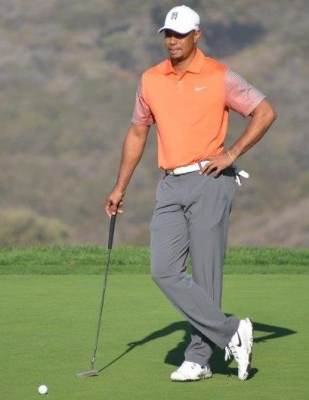 |
| Tiger Woods looked relaxed before the tournament, but was frustrated by poor play on Saturday. |
Many of the regular players I now know share similar remembrances of their youth. Their stories have much in common: neighborhood municipal course, afternoon, and cheap.
It seems to me that golf’s biggest contemporary issues stem from the difficulty of access to golf for most people – and its high cost. The fact that the game is hard was never a barrier to us, and I doubt that it scares away anyone who is competitive by nature, reasonably coordinated and would be inclined to learn. Golfers enjoy challenge – otherwise, why would we torture ourselves for hours?
Slow play IS certainly an issue, though I don’t think it’s as big of a problem as access and cost. Slow play becomes a bigger annoyance for folks who pay good money and it still takes five hours to finish a round. In other words, slow play devalues your dollar.
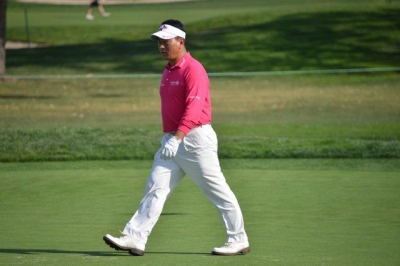 |
| K.J. Choi made the biggest move on Sunday at Torrey Pines, but fell one shot short of Scott Stallings. |
Time is money, that’s for sure. But again, that’s related to cost.
So how to grow the game? It goes back to solving the fundamental problems. Municipal courses are still packed – I don’t see empty fairways like you might find at upscale semi-private courses and expensive resorts.
For adults, take cost out of the equation, and people still play in significant numbers.
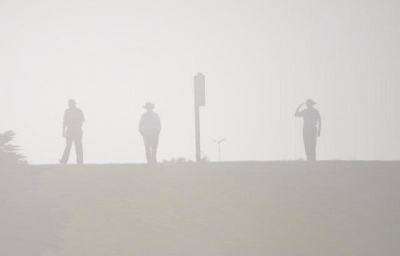 |
| The fog sometimes rolls in at Torrey Pines. Here is Phil Mickelson in the distance. |
But for kids, they usually can’t walk to golf courses anymore – and even when they can, it blows a hole in the family budget to get you on the golf course. And that’s not even including the price for equipment, shoes, clothes and all the other necessities of playing golf.
As parents, we often complain about our kids’ addiction to technology and media. We hear public relations drives like “Play 60” that are meant to get kids off the couch – but if we really want our kids to be more active, it’s up to us to help them.
And as golfers, we must do whatever we can to introduce kids to the game – and then allow them access to golf courses. It doesn’t do any good to provide clubs to a middle school P.E. teacher if the kids can’t get on the course once they learn how to hit the ball.
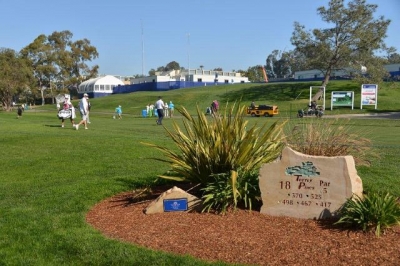 |
| The par five 18th hole at Torrey Pines (South) has been the scene of many dramatic finishes over the years. |
If the big names in golf really want to help kids play, they should be putting money into paying for kids’ fees. That would bring a lot of new people to at least try golf. Adding some group lessons would also improve the outlook.
Once the kids are there, we need to be patient with new players and seek to offer a supervised, safe environment. Nothing like a bunch of intimidating old grouches on the course and in the clubhouse to scare kids away.
Golf’s problems run deep, and easy solutions simply don’t exist. But if we can somehow make golf more like when we were kids, it will go a long way towards “growing the game.”
Details:
Disagree? Send me a note at jrendall@golftheunitedstates.com
| Related Links | Comments on this article? | |
|
Maryland National Golf Club Hollow Creek Golf Club Rocky Gap Resort PB Dye Golf Club in Ijamsville Whiskey Creek Golf Club |
E-mail Jeff Rendall, Editor: jrendall@golftheunitedstates.com |











